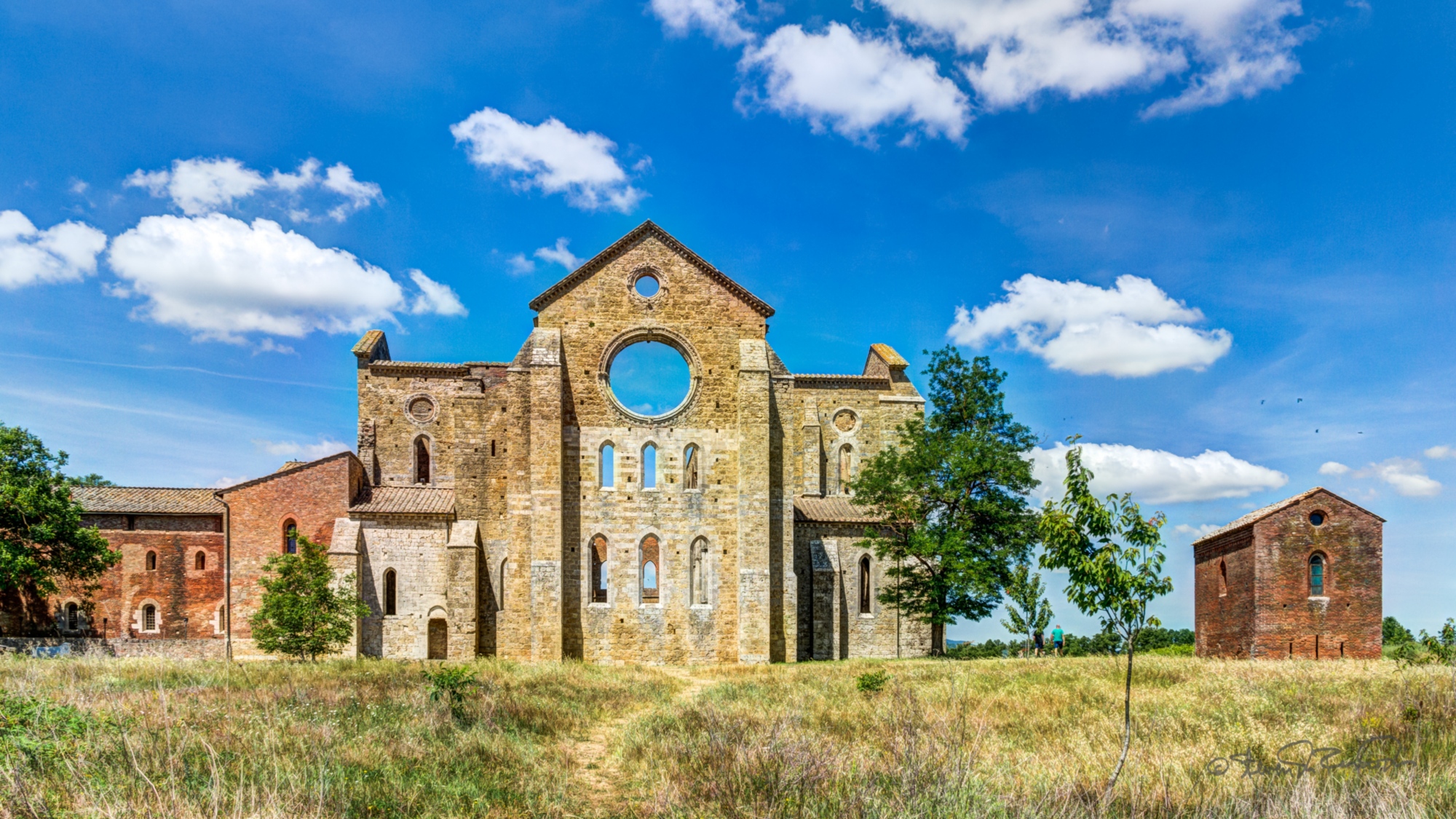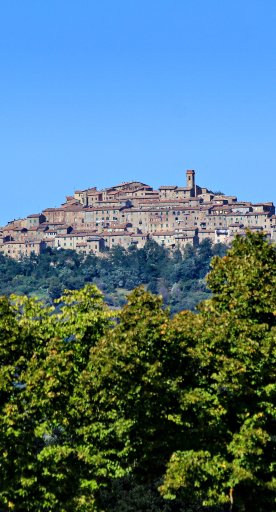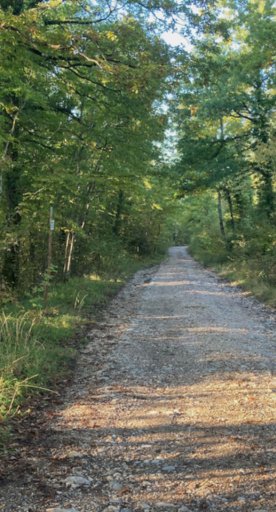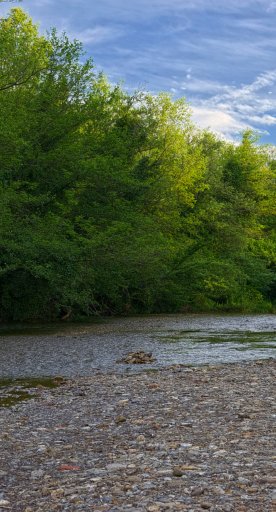
San Galgano Abbey
The fascinating remnants of one of Tuscany’s most important monasteries
In Val di Merse, within the territory of Chiusdino, rise the majestic structures of the Abbey of San Galgano, home to one of the most important Tuscan monasteries erected by the Cistercian order. This order, established in 1098 at Citeaux (Cistercium in Latin) in France, with the intention of restoring the purity of the rule of San Benedetto, rapidly spread throughout Europe thanks to Bernard of Clairvaux. In their architecture, too, the monks reflected Benedictine precepts, marked by great scrupulousness and a simplicity of ornamentation, albeit focused on the realization of spectacular constructions.
The Abbey, which is strikingly devoid of its vaults and roof, dialogues with the nearby and older Hermitage of Montesiepi, built on the site of the hermitage of Galgano.
The oldest record of Cistercian presence in Val di Merse dates back to 1191, just ten years after the death of the hermit-knight from Chiusi. The structures of the original settlement soon proved to be insufficient hence the monks began the downstream construction of the grandiose Abbey. Construction lasted from 1218 to 1288, yet the façade was never completed.
The church constitutes one of the most interesting examples of the Cistercian style straddling the Romanesque and Gothic periods, as well as one of the cornerstones for its spread in Italy.

Between the 2ⁿᵈ and 14ᵗʰ Centuries, the monks of San Galgano played a key role in the political and economic life of nearby Siena, managing the Biccherna (the finance office) and directing the works for the Siena Cathedral at the height of its development. By virtue of these new activities and its remote location, the Abbey lost importance and was gradually abandoned.
By the 16ᵗʰ century, the church roofs were in disrepair and threatened the stability of the crosses, while many windows were broken and the entire complex had fallen into an advanced state of decay. Between the 17ᵗʰ and 18ᵗʰ centuries, in an attempt to restore its wealth, the structure was entrusted first to the Valedictorians then to the Franciscans, albeit without managing to restore its former glory.
In 1786, during mass, the bell tower collapsed on the south transept, destroying the roofs and portions of the complex. The faithful and monks barely had time to flee to safety, while the latter were forced to leave the Abbey and return to Montesiepi.
Over time, the church was stripped of its materials and gradually reduced to a romantic ruin of striking grandeur, while the monastery was adapted to rural uses, with entire wings becoming pits for storing building materials.
In the last century, to prevent its ultimate collapse, the Italian State was urged by the Municipality of Chiusdino to initiate its restoration, resulting in the current appearance of the complex. Today, the Abbey is the focus of an extensive program of archaeological research and excavations that, year after year, unearth the remains of the monastery’s structures that had all but vanished.
The Hermitage of Montesiepi
The nearby Hermitage of Montesiepi, named after the saint just like the Abbey, is known for the world’s only known sword in a rock. This is the sword that belonged to Saint Galgano, who thrust his weapon into the rock at the top of the Montesiepi hillside.
Galgano’s short but intense life as a hermit had already impressed his contemporaries so much so that, in 1185, he was sanctified by Pope Lucius III. The bishop of Volterra at the time then ordered that he be buried right next to the rock that still held the sword, ordering that a chapel be erected over top. The latter took on a round shape and bichromatic effect that still characterize the structure today.

The ruins of the Saint Galgano complex, which are presented to us fully restored, are now a popular destination, with the story of the saint and his sword in the rock never failing to amaze visitors.








